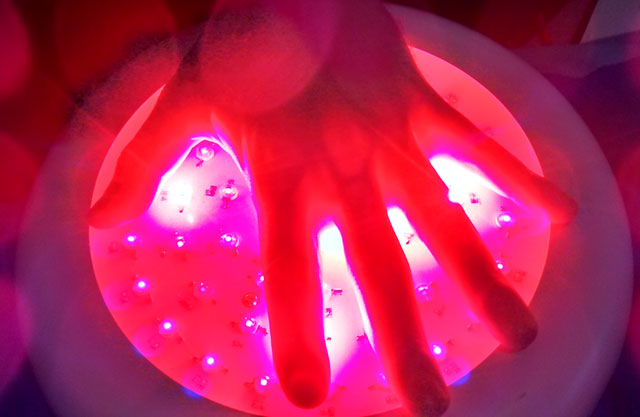Infrared Light Therapy
What is infrared light?
Infrared light refers to photons with a slightly longer wavelength than red, being just outside of the human eyesight perception range. There are 3 types of infrared; Far, Mid and Near infrared. We are only interested in near infrared for the purposes of light therapy.

Near infrared wavelengths typically studied extend from around 700nm to 1000nm. Mid and far IR radiation are not thought of as biologically active but still have a warming effect, being absorbed by water in your skin cells.
How it works
The main hypothesis is that near infrared energy in this range is absorbed by a protein pump in cell’s mitochondria called cytochrome oxidase. This is thought to ultimately help electron transport through the electron transport chain. There are other competing hypotheses. Whatever the actual mechanism, it is essentially the same as red light.
The difference is that near infrared light can penetrate more effectively than red does (which is primarily absorbed in the first inch of skin).
What can it be used for?
Infrared light therapy works on a very similar mechanism to visible red, however infrared cannot be seen by the human eye.
Infrared actually passes further inside the body than red, so it can reach muscles, bones, organs, and even the brain.
Due to this penetrative property, there is interest amongst researchers in near infrared light for various deeper seated issues of the body.
Given a powerful enough intensity of light, near infrared can in theory penetrate the skull and muscle tissue.
The Wavelengths of Infrared Light Therapy
As mentioned above, 700-1000nm infrared wavelengths seems to be the most interesting and the most well studied.

What Kind of Light Do You Need?
The type of light source does not matter much; all that matters is wavelength, heat and power density. Wavelength is important for reasons discussed above. Power density basically means light intensity and is important to aid penetration (higher light intensities mean more light will be able to penetrate). Heat is important to avoid, as this will denature the cytochrome enzyme at the core of the light therapy mechanism of action.
Medical & Healthcare Disclaimer
The information contained in this article is not intended or implicitly suggested to be an alternative for professional diagnoses, or profesionally recommended treatments & medical advice. Absolutely all of the content, including the article text itself, images, comments and other information, contained on this web page is for non-specific information purposes only. We strongly suggest that one should never ignore professional health/medical advice and we strongly suggest that one must not delay seeking a professionally recommended medical treatment because of information attained via reading this article/website. The products sold or recommended on this web site are absolutely not for the diagnosis, prevention, monitoring, treatment or alleviation of any specific disease, injury or disability.
